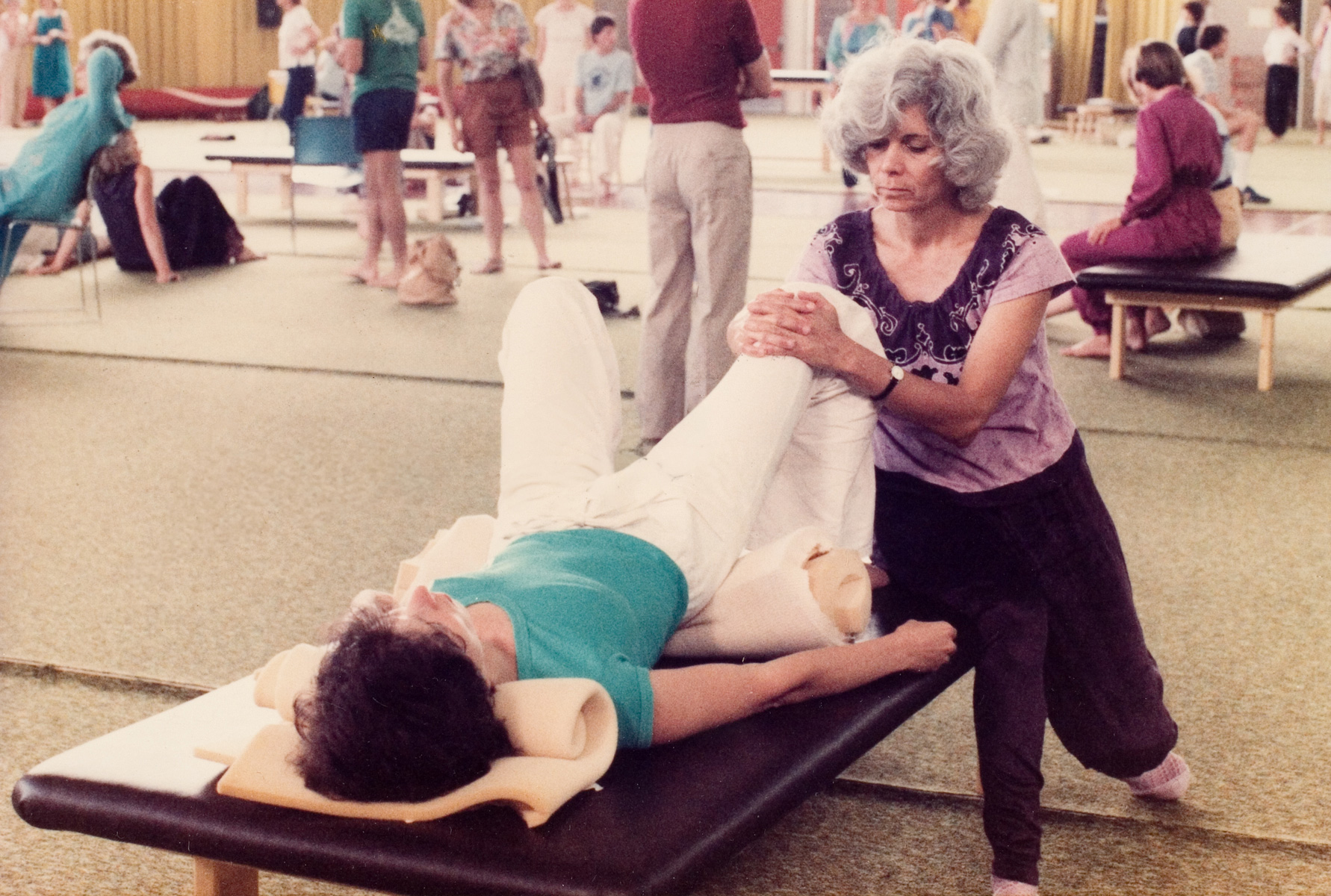A CREATIVE PROCESS
A CREATIVE PROCESS

nervous system
Benefits of Feldenkrais® Method
At Feldenkrais® a creative process, we offer an approach that seeks to affect change by working with your nervous system. By improving the communication between your brain and nervous system, we can help you change your movements by changing the way your mind controls them.
Allow things to happen y grow your vision.
There are two approaches in Feldenkrais®, one is verbal, guiding you through the process. The collective classes are called ATM awareness through movement. And the other way is by touching FI functional integration and is individual.

It is not an exercise. In these courses I will guide you by inviting you to make small movements and at the same time to become aware of the movement, of the process of integrating the whole body into it. Use your skeleton correctly to avoid unnecessary strain or change bad postural habits. Move better, feel better.
The Feldenkrais® Method is an approach that aims to bring about change by working with your nervous system. Your brain controls the nervous system and is responsible for your movement patterns. So if you want to change your movements, you literally have to change your ‘MIND’.
You just need to get comfortable on the floor on a mat, have a little time and curiosity.

Functional Integration (FI) lessons are one-on-one, 60-minute sessions designed to help individuals improve movement or address specific challenges, such as pain, discomfort, or performance in a particular activity. These lessons, part of the Feldenkrais® Method, are rooted in learning and self-improvement, making them applicable to anyone, regardless of their starting point. The method’s goal is encapsulated in Moshe Feldenkrais’s philosophy: “to make the impossible possible, the difficult easy, and the easy graceful”.
Key Features of FI Lessons
1. Personalized Approach:
– Tailored to your specific goals, whether improving a skill, managing discomfort, or recovering from an injury.
– Practitioners use gentle, non-invasive touch to guide movements and facilitate awareness of new possibilities.
2. Session Dynamics:
– Conducted fully clothed, typically on a soft yet firm table.
– Props like pillows or rollers may be used to support or ease movements.
– Lessons can involve lying down, sitting, or standing positions.
3. How It Differs from ATM Classes:
– While Awareness Through Movement (ATM) classes are self-guided group sessions, FI lessons involve a practitioner moving you to enhance awareness and explore new movement patterns.
– FI lessons resemble partner dancing, emphasizing collaboration and gentle exploration.
4. Neuromuscular Reorganization:
– The sessions encourage subconscious reorganization of movement patterns.
– By the end of a session, individuals often experience greater choice, flexibility, and ease in their movements.
5. Maximizing Benefits:
– A minimum of three sessions within two weeks is recommended for noticeable improvement, with ten sessions being ideal for addressing specific issues.
– Combining ATM classes and FI lessons can enhance learning, as ATM fosters self-discovery while FI provides insights through expert guidance.
Takeaway: Functional Integration offers a unique, personalized path to better movement, helping individuals achieve improved physical ease, awareness, and adaptability in daily life.
The Feldenkrais Method is based on the following principles:
BIOMECHANICS
– Understanding how the body functions through sensory experience.
– Learning to organize movement more efficiently.
NEUROPLASTICITY
– Unfamiliar movements creating new neural connections.
– Using movement to reorganize the brain.
– Freedom: The potential to explore new possibilities.
PSYCHOMOTOR DEVELOPMENT
– Learning as we did when we were children.
– Process-oriented attention – Discovering new possibilities.
PEDAGOGICAL APPROACH
– No model to imitate.
– Respecting each person’s pace.
– No judgment about what is “correct” – No fear of making mistakes.
– No fixed goals to achieve.
THEORY OF PERCEPTION
– Slow movement enhances coordination

MARTIAL ARTS AND EASTERN PHILOSOPHY
Judo: „The way of softness.“
– Minimum effort – Maximum efficiency.
– Differentiation – Integration.
– Calm alertness – Confidence.
PHYSICAL BENEFITS
– Improves posture, flexibility, rhythm, quality, coordination, efficiency, and movement organization.
– Helps address conditions like arthritis, lumbago, scoliosis, osteoporosis, muscle tension, cervical and lumbar pain.
– Reduces muscle tension.
– Prevents injuries and accelerates recovery.
– Relieves chronic tension and severe pain.
– Refines movements, giving them fluidity and naturalness.
– Expands the repertoire of available movements.
– Restores a youthful sense of movement.
– Increases muscle flexibility.
– Provides a sense of vitality.
– Balances breathing.
– Promotes emotional balance.
NEUROLOGICAL BENEFITS
– Creates new neural connections through brain plasticity.
– Stimulates the brain and its capacity for continuous learning.
– Prevents aging and fosters curiosity.
– Improves mobility after physical or neurological injuries.
CREATIVE BENEFITS
– Develops and stimulates attention, sensitivity, creativity, perception, and intuition.
– Encourages and enhances the ability to find new solutions.
– Contributes to awakening new abilities while improving and refining existing ones.
– Enhances self-image and self-awareness.
– Increases sensory perception.

Discover a method for promoting your baby’s motor, cognitive and emotional development.
I discovered Child Space before I finished my study of Feldenkrais® and couldn’t resist adding to my study this amazing adaptation of the method for babies and children with special needs. Chava Shelhavs, the creator of this adaptation, published her master’s thesis Working with Brain Damaged Children Using the Feldenkrais® Method (Boston University) in 1989. She completed her PhD at the University of Heidelberg, in the Departments of Sociology and Life Sciences. In her thesis she investigated the effects of the Feldenkrais® Method on learning processes and other aspects of childhood.
Chava was one of the first students of Dr. Moshe Feldenkrais, she has developed the Child’Space Method, a unique approach to support the development of babies and their caregivers based on the Feldenkrais® Method.
My son is now 23 years old but if I had known about this at the time, where at first I was told he had motor problems and I didn’t know what to do, it would have helped me a lot. This would have helped me a lot and that memory has led me to study it and it is wonderful.
– Moshe Feldenkrais
